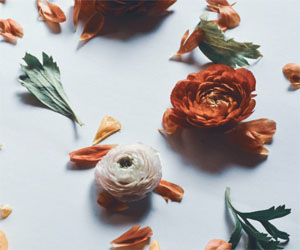


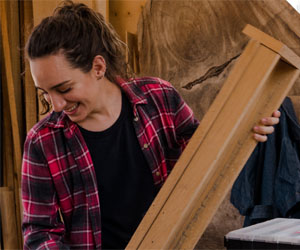
In an age of mass production and automation, the allure of handcrafted creations has never dimmed. These artisanal works represent the embodiment of dedication, skill, and a deep connection between the creator and their craft. In this article, we celebrate the enduring appeal of handcrafted creations and explore the reasons behind their timeless beauty.
A Personal Touch: Handcrafted creations carry with them a unique, personal touch that simply cannot be replicated by machines. Each piece is a labor of love, a reflection of the artisan's skill, imagination, and passion. Whether it's a hand-carved wooden sculpture, a hand-stitched leather bag, or a hand-painted ceramic vase, the individuality of the artist is imprinted on the work, making it distinct and full of character.
The Art Of Craftsmanship: Craftsmanship is at the heart of every handcrafted creation. Artisans invest time and effort honing their skills, often dedicating years to mastering their craft. This expertise shines through in the quality of their work. Every stitch, every brushstroke, every chisel mark is a testament to their commitment to perfection.
Uniqueness In Every Piece: In a world where identical, mass-produced items fill our lives, handcrafted creations stand as a beacon of uniqueness. Each piece is inherently one-of-a-kind, bearing its own imperfections, quirks, and distinctiveness. This individuality not only adds to the aesthetic value but also holds a certain sentimental charm for both the artist and the owner.
Sustainable And Ethical: Handcrafted creations are often associated with sustainability and ethical production. Artisans typically prioritize the use of natural, locally sourced materials, and the reduced carbon footprint makes these items eco-friendly. Additionally, the process of creating by hand often ensures that the production is more ethical and less exploitative compared to mass manufacturing.
Preservation Of Tradition: Many handcrafted traditions have been passed down through generations, preserving cultural heritage and age-old techniques. Artisans who create handcrafted items are often bearers of cultural traditions and the knowledge of time-honored methods. This continuity of tradition adds a profound layer of significance to each piece.
The Joy Of Connection: When you purchase a handcrafted creation, you're not just acquiring an object; you're connecting with the artist and their story. Knowing the person behind the craft brings a sense of authenticity and depth to the item. It becomes a conversation starter, a piece that prompts stories and conversations about its origin and creation.
A Sense Of Timelessness: Handcrafted creations have an enduring appeal that transcends trends and fads. These pieces are designed to withstand the test of time, both in terms of their physical durability and their timeless aesthetics. They can be passed down through generations, acquiring a rich history along the way.
The beauty of handcrafted creations lies in their authenticity, craftsmanship, and timeless appeal. They represent a conscious departure from the disposable culture that mass production often encourages. These works of art are imbued with the love, dedication, and stories of their creators, making them more than just objects; they are treasures that enrich our lives and connect us to the traditions of the past. Handcrafted creations are a testament to the enduring human spirit that values artistry, tradition, and the pursuit of excellence.
Needle And Thread
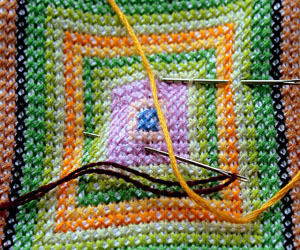 The Thread's Transformative Power: Thread, on the other hand, is a slender strand of material that comes in numerous forms, including cotton, silk, wool, and synthetic fibers. Its primary function is to connect, bind, and adorn. When combined with the needle, thread takes on the role of an artist's brush, creating intricate designs, securing seams, and adding decorative elements to fabrics. The choice of thread can dramatically impact the final outcome, from the sheen of silk to the durability of polyester.
The Thread's Transformative Power: Thread, on the other hand, is a slender strand of material that comes in numerous forms, including cotton, silk, wool, and synthetic fibers. Its primary function is to connect, bind, and adorn. When combined with the needle, thread takes on the role of an artist's brush, creating intricate designs, securing seams, and adding decorative elements to fabrics. The choice of thread can dramatically impact the final outcome, from the sheen of silk to the durability of polyester.
Sewing And Fabric Mending: At its core, the needle and thread serve the practical purpose of sewing and mending fabric. From fixing a torn hem to attaching buttons, these tools are essential for extending the lifespan of clothing and textiles. This ability to repair and restore not only saves money but also contributes to sustainable and eco-friendly practices by reducing waste.
Embroidery And Artistry: One of the most celebrated applications of the needle and thread is in the realm of embroidery. This art form involves the use of different stitches and thread colors to create intricate and beautiful designs on fabric. It has been used for centuries to embellish clothing, linens, and decorative items, adding a touch of elegance and personalization to everyday objects.
Cultural And Traditional Significance: Needlework, often passed down through generations, carries cultural and traditional significance in many societies. It can tell stories, showcase regional motifs, and connect individuals to their heritage. Each culture has its unique stitching techniques and designs, making the needle and thread a powerful tool for cultural preservation.
The Allure Of Vintage Items
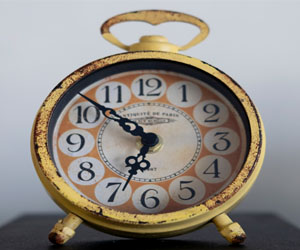 A Glimpse Into The Past
A Glimpse Into The Past
Vintage items transport us back in time, allowing us to connect with the past and experience the styles and aesthetics of bygone eras. Each vintage piece carries a story, representing the culture, trends, and craftsmanship of the time in which it was created. It's like holding a tangible piece of history in your hands.
Unique And One-Of-A-Kind
One of the primary attractions of vintage items is their uniqueness. Unlike mass-produced modern goods, vintage pieces are often one-of-a-kind or produced in limited quantities. This rarity gives vintage items a sense of exclusivity and individuality, making them highly sought after.
Quality Craftsmanship
Vintage items are known for their superior craftsmanship. In the past, attention to detail and quality were highly prized, resulting in products that were built to last. Vintage clothing often features hand-stitched seams, while vintage furniture may showcase intricate woodwork. The durability and craftsmanship of vintage items are often far superior to their modern counterparts.
Sustainable Shopping
In a world increasingly concerned about sustainability and environmental impact, vintage shopping has gained popularity as a sustainable alternative to fast fashion and disposable consumer goods. Buying vintage items extends the life cycle of products and reduces the demand for new manufacturing, contributing to a greener and more eco-conscious lifestyle.
Time-Tested Durability
The fact that vintage items have stood the test of time is a testament to their durability. When well-maintained, vintage items can continue to serve their intended purpose or find new life in creative and decorative ways. For example, vintage suitcases can be repurposed as decorative storage, and old mason jars can be used for home canning or as unique vases.
The Healing Power Of Creativity
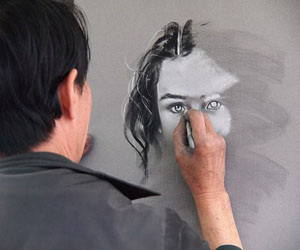 The Benefits Of Therapeutic Crafts
The Benefits Of Therapeutic Crafts
Stress Reduction: The act of creating something with your hands can be meditative in itself. Whether you're knitting, painting, or sculpting, the rhythmic and repetitive motions can help lower stress levels, ease tension, and promote relaxation.
Self-Expression: Therapeutic crafts offer a non-verbal means of self-expression. You can convey your emotions, thoughts, and feelings through your creative work, allowing for a deeper connection with yourself.
Sense Of Accomplishment: Completing a craft project, no matter how simple, can provide a sense of achievement and boost self-esteem. This can be particularly meaningful for those struggling with self-doubt or anxiety.
Social Connection: Many therapeutic crafts can also be social activities. Joining a knitting club, taking a pottery class, or participating in a painting workshop provides opportunities for social interaction and the building of supportive communities.
Emotional Release: Engaging in crafts can serve as a healthy outlet for pent-up emotions. The act of creating can be emotionally cathartic, allowing individuals to release and process feelings in a constructive manner.
Improved Concentration: Craft projects often require attention to detail, which can help improve focus and concentration. This can be especially beneficial for individuals with racing thoughts or attention-related challenges.
Crafting As A Form Of Therapy
Art therapists and mental health professionals often incorporate therapeutic crafts into their sessions. The process of creating art can help clients explore their emotions, build resilience, and develop coping mechanisms. It provides a safe space for self-expression and healing, particularly for those dealing with trauma, grief, or mental health issues.
Incorporating Therapeutic Crafts Into Daily Life
You don't need to be a professional artist to experience the benefits of therapeutic crafts.

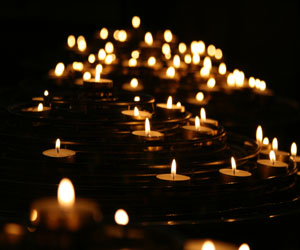

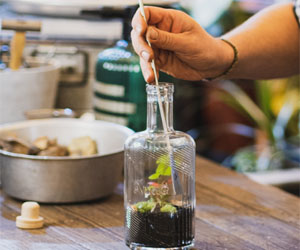
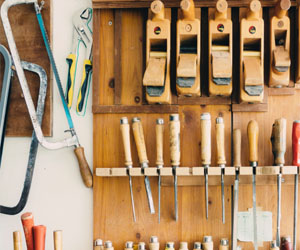
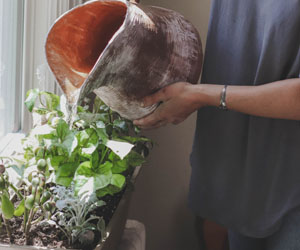
The Art And Science Of Brewing
 Another crucial aspect of beer craftsmanship is quality control. Craftsmen continually monitor their brews throughout the fermentation and conditioning stages, ensuring consistency and flavor stability. They understand that a small deviation in the brewing process can result in a vastly different beer, and maintaining the intended flavor profile is paramount.
Another crucial aspect of beer craftsmanship is quality control. Craftsmen continually monitor their brews throughout the fermentation and conditioning stages, ensuring consistency and flavor stability. They understand that a small deviation in the brewing process can result in a vastly different beer, and maintaining the intended flavor profile is paramount.
In the craft beer movement, beer craftsmanship goes beyond the brewing process. It extends to branding, marketing, and presentation. Craft breweries often take pride in unique packaging, labels, and taproom aesthetics, offering consumers a complete sensory experience that complements the liquid inside the bottle or glass.
Craftsmen also embrace innovation. They experiment with new ingredients, techniques, and styles, pushing the boundaries of what beer can be. This spirit of innovation has led to the creation of entirely new beer categories, such as sour ales and fruit-infused brews, expanding the palate of beer lovers.
Beer craftsmanship is a blend of tradition, science, and artistry that elevates brewing from a mere beverage production to a true craft. The dedication to sourcing the finest ingredients, the mastery of brewing techniques, and the passion for creating exceptional flavors are all facets of the craftsmanship that defines the world of beer. Whether it's a small, family-run brewery or a larger craft beer producer, the commitment to quality and the pursuit of excellence is the common thread that unites all beer craftsmen. This age-old tradition continues to evolve and thrive, offering beer enthusiasts a diverse and exciting world of flavors and experiences to explore. Cheers to the craftsmanship that makes beer a timeless and cherished art form.
Earth-Saving Crafts
 Environmental Impact
Environmental Impact
One of the most significant aspects of earth-saving crafts is their direct impact on the environment. By reusing materials, these crafts reduce the demand for new resources, saving energy and conserving raw materials. Crafting from waste materials not only lowers carbon footprints but also lessens the burden on landfills. It's a small, yet crucial, step toward mitigating the detrimental effects of overconsumption and waste generation.
Empowering Individuals
Engaging in earth-saving crafts is empowering. It fosters a sense of self-sufficiency and self-expression. Crafting allows individuals to take control of their environmental impact and make conscious choices. It encourages people to think outside the box and find new uses for old items, thereby reducing their reliance on mass-produced, environmentally-harmful goods.
A Platform For Innovation
Earth-saving crafts promote innovation and creativity. When faced with limited resources, crafters often devise ingenious solutions to repurpose materials. This sparks fresh ideas and unique designs. The combination of limited resources and boundless creativity gives rise to one-of-a-kind creations.
The Art Of Crewel Embroidery
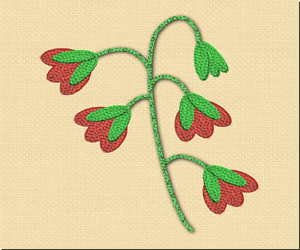 A Stitch In Time: The History Of Crewel Embroidery
A Stitch In Time: The History Of Crewel Embroidery
Crewel embroidery has a storied history that dates back over a thousand years. The word "crewel" is believed to have originated from the Old French word "croisel," which referred to a piece of metal or a slender wire used for embroidery. Crewelwork gained prominence in Europe during the 16th and 17th centuries and was particularly associated with England.
Characteristics Of Crewel Embroidery:
Crewel embroidery is known for its distinct characteristics, which set it apart from other embroidery techniques:
Use Of Crewel Wool: Crewel wool, a fine and twisted two-ply yarn, is the primary thread used in this technique. Its thickness and texture lend depth and dimension to the designs.
Raised Surface Stitches: Crewel embroidery often employs raised or padded stitches. These give the designs a textured, three-dimensional quality.
Botanical And Natural Motifs: Traditional crewelwork is renowned for its intricate depictions of botanical and natural motifs, including flowers, vines, and animals. These designs capture the essence of the natural world.